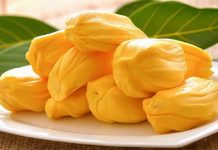Scientific name: Anacardium occidentale L.
Family: Anacardiaceae
Synonym: Anacardium microcarpum Ducke
Bengali/Vernacular name: Kaju, Kajubadam, Hijlibadam.
Tribal name: Kresenath gach (Chakma), Chieyong-caarah (Chak), Soh-liang (Khasia), Guestunut (Lushai), Senabadam (Murang), Guestunut (Pangkhoa), Phang-thaw-tara-sthei (Rakhaing), Kaju dare (Santal), Keshna (Tanchangya).
English name: Cashew nut, Goa-almond.
Description of the plant: A small to medium-sized, evergreen tree, with much spreading branches which form a large crown. Leaves simple, alternate, ovate, base round or blunt, margin entire. Flowers are small, crowded at the tips of the branches and yellow to yellowish-white, the petals usually with pink stripes. Fruit a nut, ash-coloured, kidney-shaped.

Plant parts used: Leaf, bark, fruit, and seed.
Ethnomedicinal uses: Leaf decoction is advised to take for diarrhoea.
Paste parepared from the seeds of the plant is applied to treat skin infection and burns.
A decoction is made with the bark of the plant is taken three times a day (50 ml amount each time) until the dysentery is cured.
The fruit of the plant is taken for the treatment of syphilis
Decoction is made with the leaves of the plant is gargled for mouth ulcer, tonsillitis, sore throat and used for washing wounds.
The leaves of the plant are used for the treatment of eczema, psoriasis, dyspepsia, genital problems, impotence, bronchitis, and cough.
An infusion is made with the bark of the plant is used to treat diabetes, weakness, muscular debility, urinary disorder, and asthma.
Distribution: The species occurs in the forest areas of Tangail, Chittagong, and the Chittagong Hill Tract under cultivated condition.
Is this plant misidentified? If yes, please tell us….














